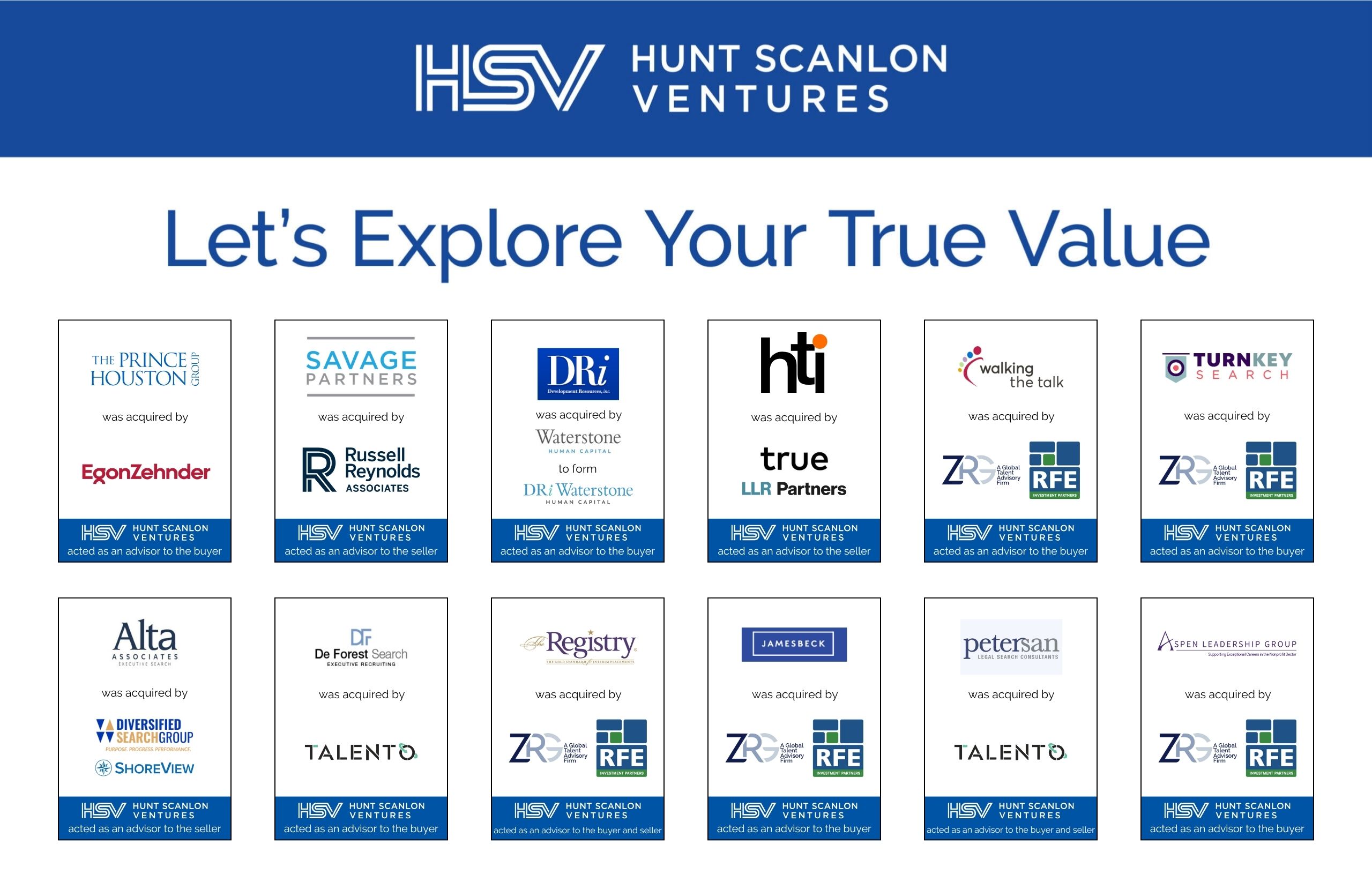Dealmakers entered 2025 with tremendous optimism. That sentiment is now flashing caution as markets seek more clarity. Slower growth, market volatility, and a sharp shift in trade policy are stalling M&A activity. But while the pace may be cooling, the smart money is still moving. Evan Berta, an associate at Hunt Scanlon Ventures, examines how deal teams are navigating the turbulence by focusing on must-do acquisitions rather than opportunistic plays.
In EY-Parthenon’s latest Deal Barometer, the message is clear: expect a more subdued M&A environment this year. After a strong rebound in 2024, the market is losing steam as macro headwinds begin to bite.
Deal volumes for transactions over $100 million are forecast to rise just 1% in 2025, following a 19% gain last year. According to EY, “corporate M&A volumes are projected to remain flat in 2025 – totaling 1,142 deals,” while private equity activity is expected to notch only a “modest 1% increase, totaling 407 transactions.”
Behind the slowdown are multiple drag factors: tariffs, slower income growth, fading fiscal support, and persistently high interest rates. EY-Parthenon notes, “…slower disposable income growth, fading fiscal support and still-elevated interest rates” are eroding business sentiment.
These forces aren’t just economic abstractions, says Evan Berta, an associate at Hunt Scanlon Ventures, the leading M&A advisor to executive search firms. “They’re actively weighing on boardroom confidence and making decision-makers hesitant to move forward on strategic acquisitions.”
Stalling Activity
The trade landscape changed dramatically just 30 days ago with the announcement of a “10% universal tariff on all imports” and a 145% rate on Chinese goods. According to EY-Parthenon, this caused “a material shift” in the global economic and financial outlook.
“These forces aren’t just economic abstractions. They’re actively weighing on boardroom confidence and making decision-makers hesitant to move forward on strategic acquisitions.”
The implications are significant, notes Mr. Berta, as dealmakers now face an increasingly unpredictable regulatory and trade backdrop, forcing them to model a much wider range of downside risks.
Uncertainty around how tariffs will be implemented, or how other countries might respond, is fueling hesitation.
“The lack of clarity around implementation timelines, scope and retaliatory measures has prompted many business leaders across sectors to pause investment decisions, including capex and talent,” said EY.
This highlights that strategic investments are being delayed not because opportunities aren’t there, but because leaders are unsure how the macro environment might evolve in the next few quarters.
As a result, EY-Parthenon revised its GDP growth forecast for the U.S. to 1.1% for both 2025 and 2026, significantly down from previous estimates. This underscores a broader theme: when growth is scarce, capital becomes more cautious.
Risk Appetite is Tapering
Corporate deal-making remains active, but the risk appetite is tapering. EY-Parthenon projects flat growth in corporate M&A, with 1,142 deals expected for 2025. That’s in line with last year’s strong rebound, but momentum is clearly slowing.
“The M&A market is cooler, but not frozen. Dealmakers that stay alert, adaptable, and ready to strike when the signal is right will be the ones that lead the next wave of deals.”
What’s striking is the divergence in possible outcomes. In a more optimistic macro scenario, lower rates, cooler inflation, and stronger growth, deal volume could rise 6%. But if headwinds intensify, it could fall 6%.
The dual-path forecast reflects a market increasingly dependent on external signals from the Fed, inflation data, and geopolitical developments.
“Momentum will likely slow,” EY-Parthenon warns. That doesn’t mean the market will freeze, but it does suggest that boards and deal teams will be far more selective, focusing on must-do acquisitions rather than opportunistic plays.
Waiting for Clarity
Private equity, flush with dry powder, is in a holding pattern. The projected 1% increase in deal volume is tepid, especially coming off a 23% surge in 2024. But context matters; PE firms aren’t out of the game, they’re just recalibrating.
High interest rates are reshaping deal math. Sponsor-backed transactions are more difficult to finance at scale, and that’s translating into slower execution across the board. Still, EY-Parthenon believes the optionality is there. In a bullish environment, PE deal volume could grow by 20%; in a more constrained scenario, it could fall by 14%.
This range reflects just how much economic confidence is driving activity. Many firms are sitting on capital and waiting for better clarity on financing conditions, valuation resets, and market stabilization.
Tariffs are Deal Killers
The EY-Parthenon report doesn’t just cite trade as a headline risk, it shows the tangible impact. “About 25% of general partners say their portfolio companies have had deals withdrawn or delayed as a result of tariff concerns.” That statistic underlines the real-world consequences, that tariffs aren’t just affecting cost structures; they’re killing deals.
More sponsors are diving deeper into their supply chains, trying to understand where exposure exists and how they might pivot.
“About 25% of general partners say their portfolio companies have had deals withdrawn or delayed as a result of tariff concerns.”
“87% of general partner respondents say they’re working with portfolio companies to understand the impacts across the supply chain,” up 17 percentage points in just three months. That surge shows how rapidly this issue has moved to the top of the agenda.
Meanwhile, debt markets are tightening. “43% say they’re worried about being able to put together financing packages as spreads begin to widen in the leveraged finance markets.” Financing stress adds another layer of complexity to deals, particularly those requiring large capital stacks or cross-border coordination.
When to Pounce
Despite the volatility, strategic buyers and PE firms alike are positioning to act when dislocations emerge. EY-Parthenon emphasizes that “market dislocations often lead firms to become more opportunistic as they look to capitalize on potential mispricing.” This is the window where experienced investors shine, and where macro instability creates pricing opportunities others hesitate to pursue.
Private credit is poised to continue its ascent, stepping in where syndicated loans become less viable. And in sectors like aerospace and defense, the report notes growing PE interest as geopolitical shifts prompt increased government spending and long-term tailwinds.
The bottom line says Mr. Berta: “The M&A market is cooler, but not frozen. Dealmakers that stay alert, adaptable, and ready to strike when the signal is right will be the ones that lead the next wave of deals.”
Article By

Evan Berta
Evan Berta is an Associate at Hunt Scanlon Ventures, specializing in data analysis, market mapping, and target list preparation. He plays a critical role in identifying and building out groups of firms in sectors of interest, including preparing strategic overviews of top potential targets for acquisitions. Evan’s analytical expertise supports the firm’s sourcing initiatives, particularly in identifying niche and emerging market opportunities, and delivering actionable insights on tight timelines.






